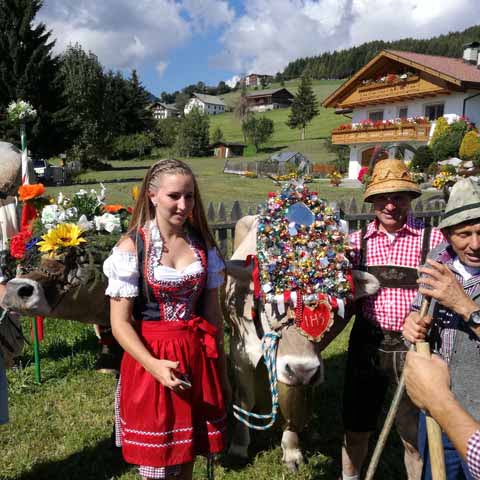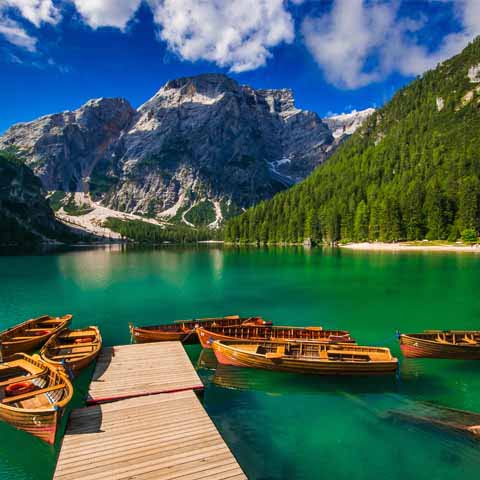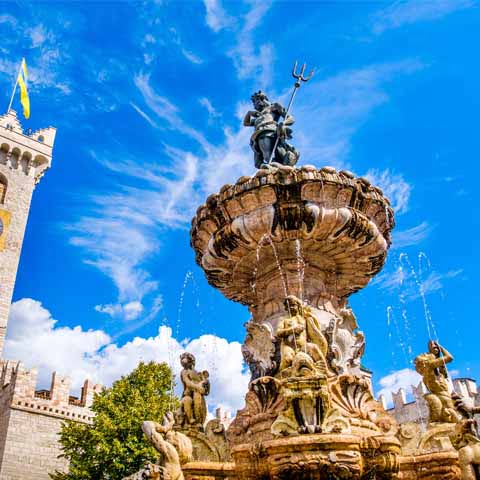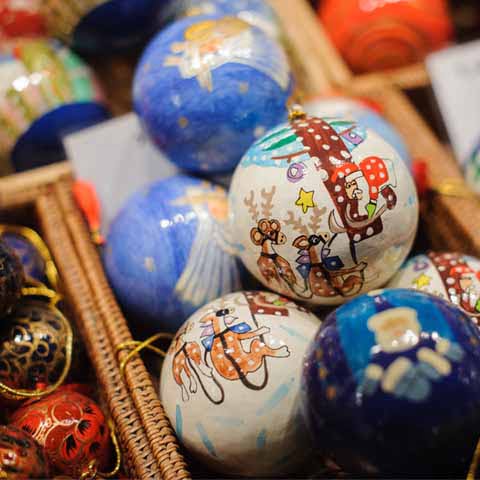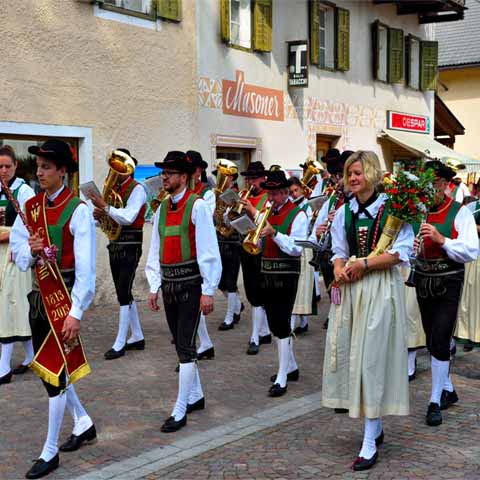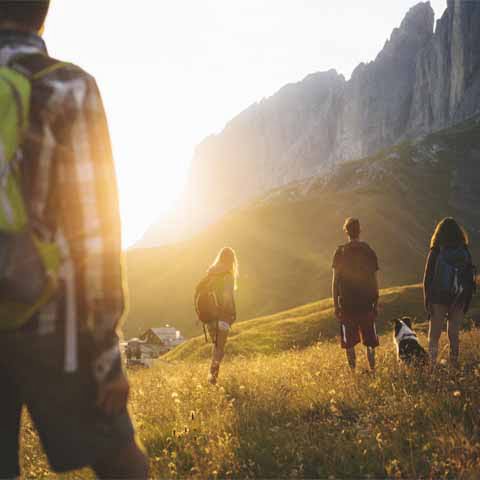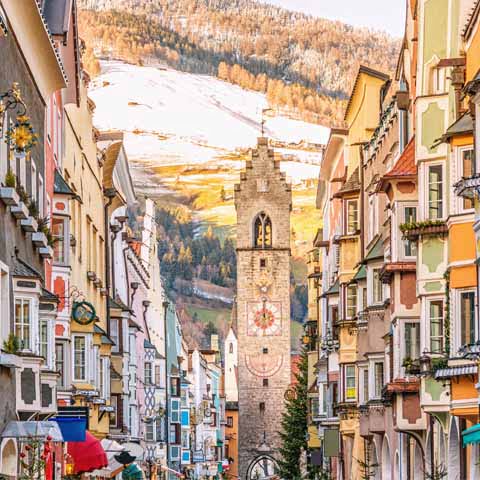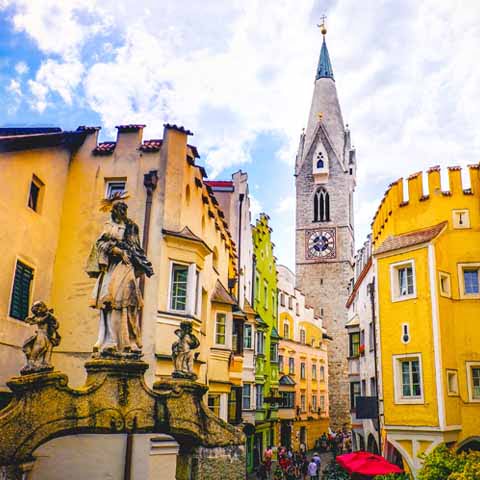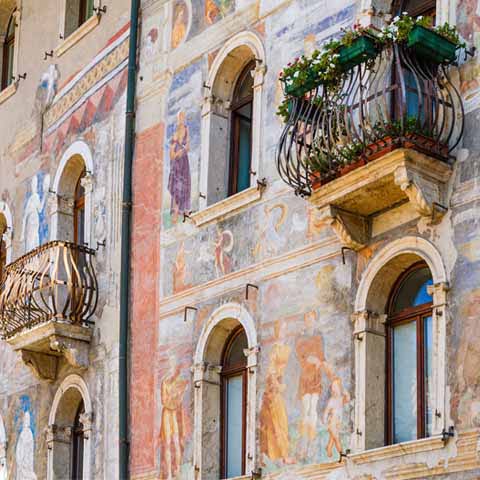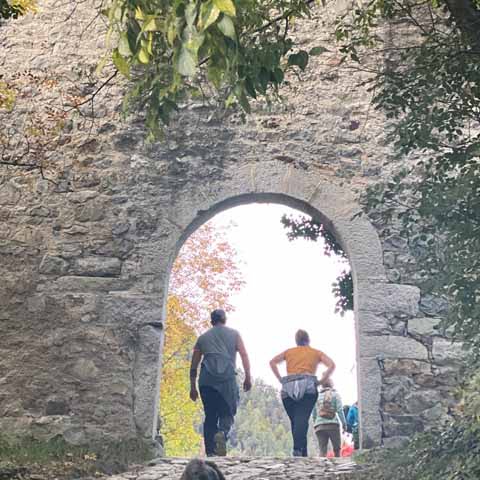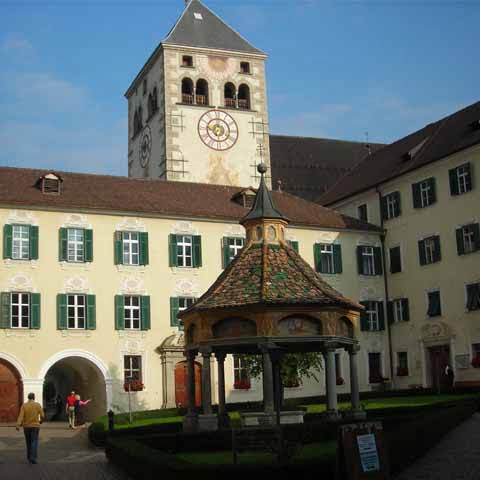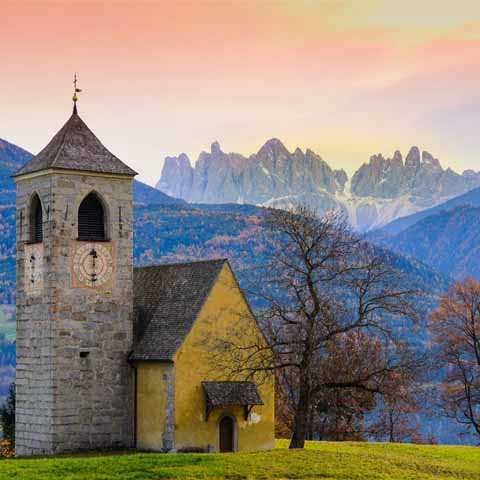Trentino Alto Adige Culture Travel Guide
Trentino-Alto Adige is Italy’s northern most region, with a surprising treasure trove of diverse influence from Italy and Austria tucked away into majestic mountains and low-lying valleys that make it unlike any other region of Europe.
While there is some Mediterranean influence in Trentino-Alto Adige, the region’s proximity to Austria gives way to a strong German influence. This unique blend of cultures is responsible for the formation of an independent string of traditions and culture that completely sets the region apart from its neighbors. Even the region’s name pays homage to that diversity with the name being a combination of the titles of two separate areas within the territory: Trentino in the south, located in the Province of Trento, and Alto Adige in the north located in the Province of Bolzano.
The area is one of only five autonomous regions of Italy along with Friuli-Venezia Giulia, Sardinia, Sicily, and the Aosta Valley. This classification allows the government a significant degree of independence due to the presence of distinct cultural minorities residing in the area. This distinction is a prominent factor in allowing both Austrian and Italian cultures to blend and thrive.
Visitors will notice that instead of a centrally spoken language, both Italian and German are spoken fluently. With almost two-thirds of Bolzano being native German speakers and most residents of Trento speaking Italian, both languages must be reflected in city documents, ID cards, bus tickets, receipts, and even street signs. For this reason, all public sector workers in Alto Adige must pass an exam demonstrating their written and oral competence in both Italian and German.
Trentino Alto Adige Architecture
Trentino Alto Adige’s architecture is a combination of both the contemporary and antique. While many of the alpine towns along the Dolomite Mountains feature more modern structures, the region’s castles are perfect examples of historical antique structures.
The Castle of Buonconsiglio was built in the thirteenth century but is comprised of several newer additions built in different eras. Located in Trento, the landmark is home to the Provincial Gallery of Art and resides slightly elevated from its surroundings, giving way to some spectacular scenic overlooks.
The Eagle Tower preserves the famous “Cycle of the Months,” a fascinating pictorial cycle of late Middle Ages. Folklore legends say the castle was at one point connected to a city cathedral by a secret tunnel, which allowed prince-bishops to move between them undetected.
Castle Thun is another impressive castle structure recognized by its strong defensive system of walls and towers. This castle features a drawbridge, two towers, and more than a dozen stone pillars. Because of the period-based furniture, library, and collection of arms, this castle is rich with historical value. The structure is frequently home to various concerts and cultural events.
Also of interest is Castle Roncolo which is known for its frescos and a number of mysterious legends that surround it. The castle sits perched high on the mountainside, offering a stunning view of the Talvera River. Castle Firmiano is one of the largest castles throughout South Tyrol and is home to Messner Mountain Museum.
Eremo di San Colombiano is a hermitage that is an architectural phenomenon resting high on a cliff above the Leno River. A stairway of 102 rock carved steps leads up to this impressive structure that has been inhabited since 753, with newer additions dating back to the tenth century. Possibly most interesting of all, Eremo di San Colombiano is dedicated to a saint who local legend says killed a dragon responsible for the death of children baptized in the Leno River.
Perhaps the most unusual but popular piece of architecture can be found in Lake Reisa, the largest lake in South Tyrol. Rising high out of this sparkling lake is a partially submerged steeple that is a defining characteristic for the lake itself, as well as beyond South Tyrol. The steeple is the only remnant of the locality of Curon Venosta, which was flooded in the early 1900s and is particularly striking because of its home in the water.
Art in Trentino Alto Adige
Giovanni Segantini was a notable painter made famous by his connection with the land of Trentino-Alto Adige. He depicted several landscapes of the region representing the strong essence of nature found tucked away in the mountains.
A painter and graphic designer, Fortunato Depero was an eccentric artist that created pieces with hopes to impress and entertain in every work he made.
Although not specific to any one artist, the art of woodworking flourishes in the region still today and is popular amongst locals and tourists alike. The most requested pieces of wood craftsmanship are native scenes of Val Gardena and ornate cuckoo clocks of Val Zoldana. The people take great pride in their work and can often create a one of a kind piece for those with something special in mind. Intricate pieces of local woodwork can be found at markets throughout the year, and especially at Christmas markets during November, December, and January.
During January, fantastic ice sculptures can be found on display in the villages of San Candido and San Vigilio in Val Pusteria. An international snow sculpture festival is a major attraction for art lovers as they watch international artists create magnificent sculptures from fresh snow blocks. With only a few choice tools and water to refine their creations, the artists’ works are truly one of a kind and stay on illuminated display in the villages until the weather warms and melts the sculptures.
Music in Trentino
The Schuhplattln Folk Dance is a peculiar tradition of Trentino-Alto Adige with origins in Bavaria that has been adopted by residents of Alto Adige as its own. Traditional folk music plays as dancers clap, step on each other’s feet, spin, jump, yodel, and even slap each other in the face. Although historically the dance featured men only, today women are beginning to participate as well.
Trentino is home to the Bonporti Music Conservatory which hosts an annual Words of Sound Festival as well as the International Antonio Pedrotti Orchestral Conducting Competition.
A private piano museum, the Antique Piano Museum, located in the town of Ala has housed famous names such as Maria Theresa of Austria, Mozart, and Napoleon. In addition, the museum is dedicated to restoring these instruments to a historically accurate and playable condition.
This seemingly sleepy region of Trentino-Alto Adige offers stunning architecture, artistry, and music of multiple cultures tucked into the many villages of local mountains and valleys.
Travel Guides
